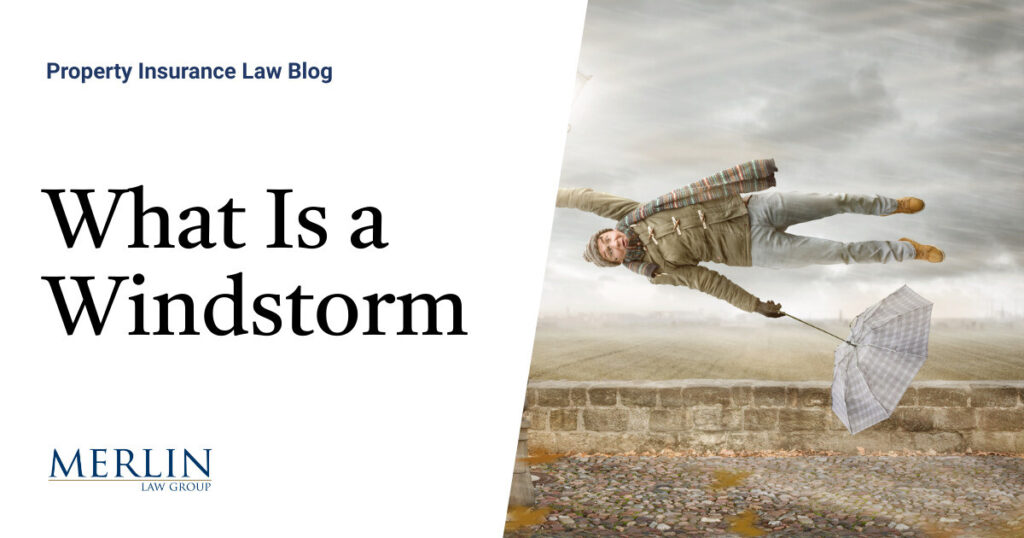What Is a Windstorm? A California Perspective

What is a windstorm? The issue is raised frequently when a hurricane occurs, and an insurance company wants to apply a “windstorm deductible,” as noted in Is it Correct for Your Insurance Company to Consider Windstorm Damage Synonymous with Hurricane Damage. Fifteen years ago, I noted in The Insurance Industry Recognizes Hurricanes are “Windstorms”–An Important Admission, that the insurance industry typically considers hurricanes and tropical storms “windstorms.”
A recent case decision involving a boat that was damaged as a result of strong winds and big waves involved the issue of what the definition of the term “windstorm” is.1 The federal court refused to grant the insurance company’s motion for summary judgment, noting:
The policy at issue here covers ‘personal property owned or used by an ‘insured’ while it is anywhere in the world.’ ‘Windstorm’ is listed as a ‘covered peril.’ The policy does not define ‘windstorm.’ Defendant argues that no windstorm occurred and therefore the damage was not caused by a covered peril.
While there is no binding authority on what constitutes a windstorm, defendant cites Morris v. Allstate Insurance Company, 16 F. Supp. 3d 1095 (C.D. Cal. 2014), which is the only case the court has located defining the term under California law. The district court there relied on several dictionary definitions that defined windstorm as ‘a storm with high winds or violent gusts with little or no rain.’ Defendant’s brief also argues that a windstorm ‘is generally distinguished from an area of high wind that is normal for the area.’ This aligns with the approach taken by several other jurisdictions that ‘construe the term ‘windstorm’ by . . . requir[ing] that the wind be ‘unusual’ in some respect.’ See 17 Couch on Ins. § 153:27; see also, e.g., Graff v. Farmers Mut. Home Ins. Co. of Hooper, Dodge County, 211 Neb. 13, 17 (1982) (a windstorm is ‘a wind of unusual violence or tumultuous force’).
The undisputed facts available in the record are as follows. At the time of the accident, approximately 10:00 p.m., it became ‘very windy and there were big waves.’ Both wind and waves suddenly ‘came upon’ the boat. The wind speed when the boat departed for its journey in the morning was five to six knots. The winds later accelerated to speeds of 25 to 30 knots. These higher winds prompted the captain to change the boat’s course, and once the captain lost control because the motor was damaged by waves, the wind pushed the boat towards the coast where it was destroyed. The tool that the captain used to continuously monitor the wind forecast had given no indication that such high winds would be present.
The court concludes from the above facts that there was a windstorm. The record indicates that there were high winds and no rain. The wind was also ‘unusual,’ as there was a marked increase in wind speed, the wind was unexpected, and the wind both caused the captain to change the boat’s course and exerted force on the boat to further push it off course towards dangerous conditions.
The court therefore will not grant summary judgment on the basis that no covered windstorm existed.
Still, the question remains—at what point does a strong wind become a “windstorm?”
Thought For The Day
She stood in the storm, and when the wind did not blow her way, she adjusted her sails.
—Elizabeth Edwards
1 Carlton v. AmGUARD Ins. Co., No. 2:22-cv-02030 (E.D. Cal. May 29, 2024).







